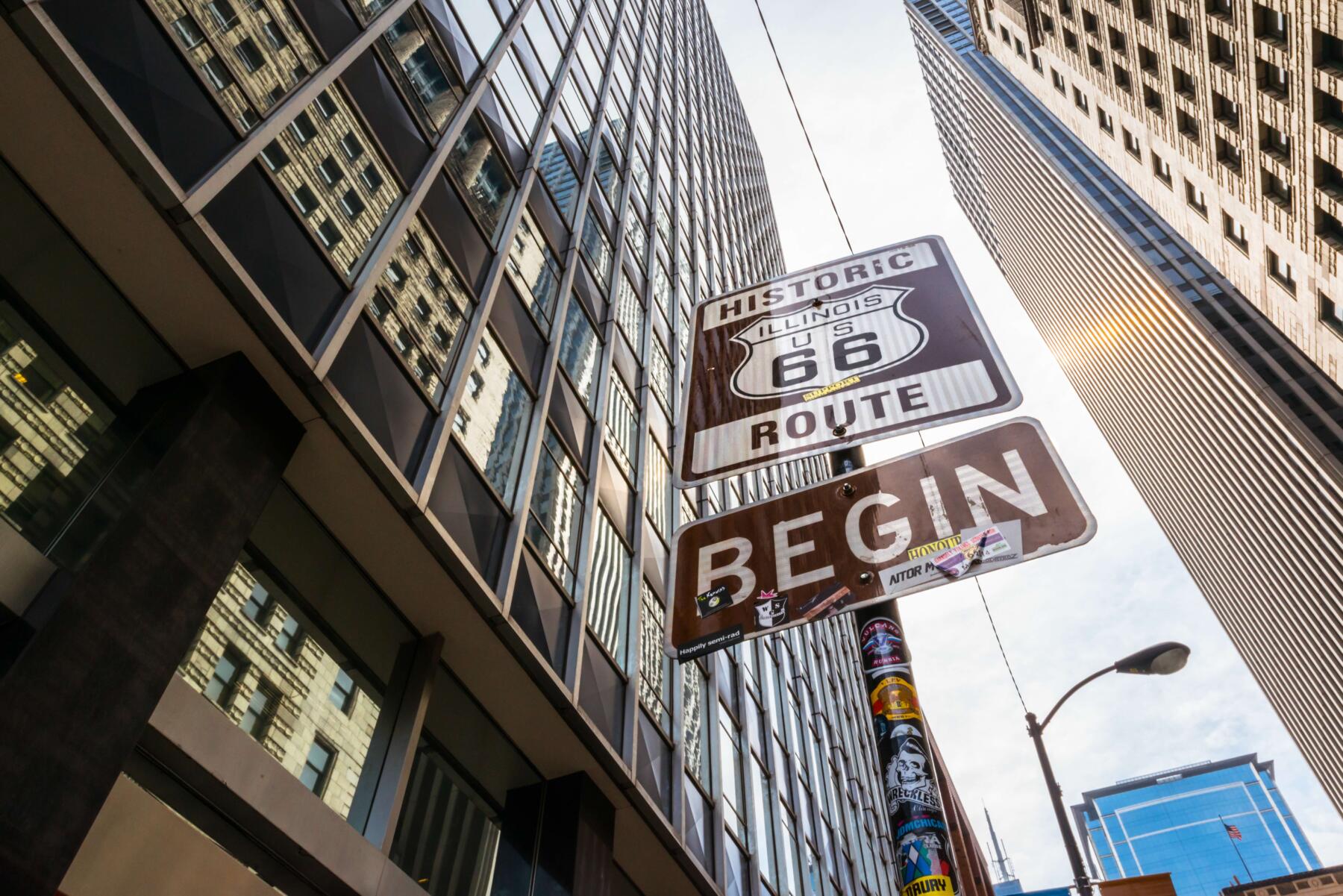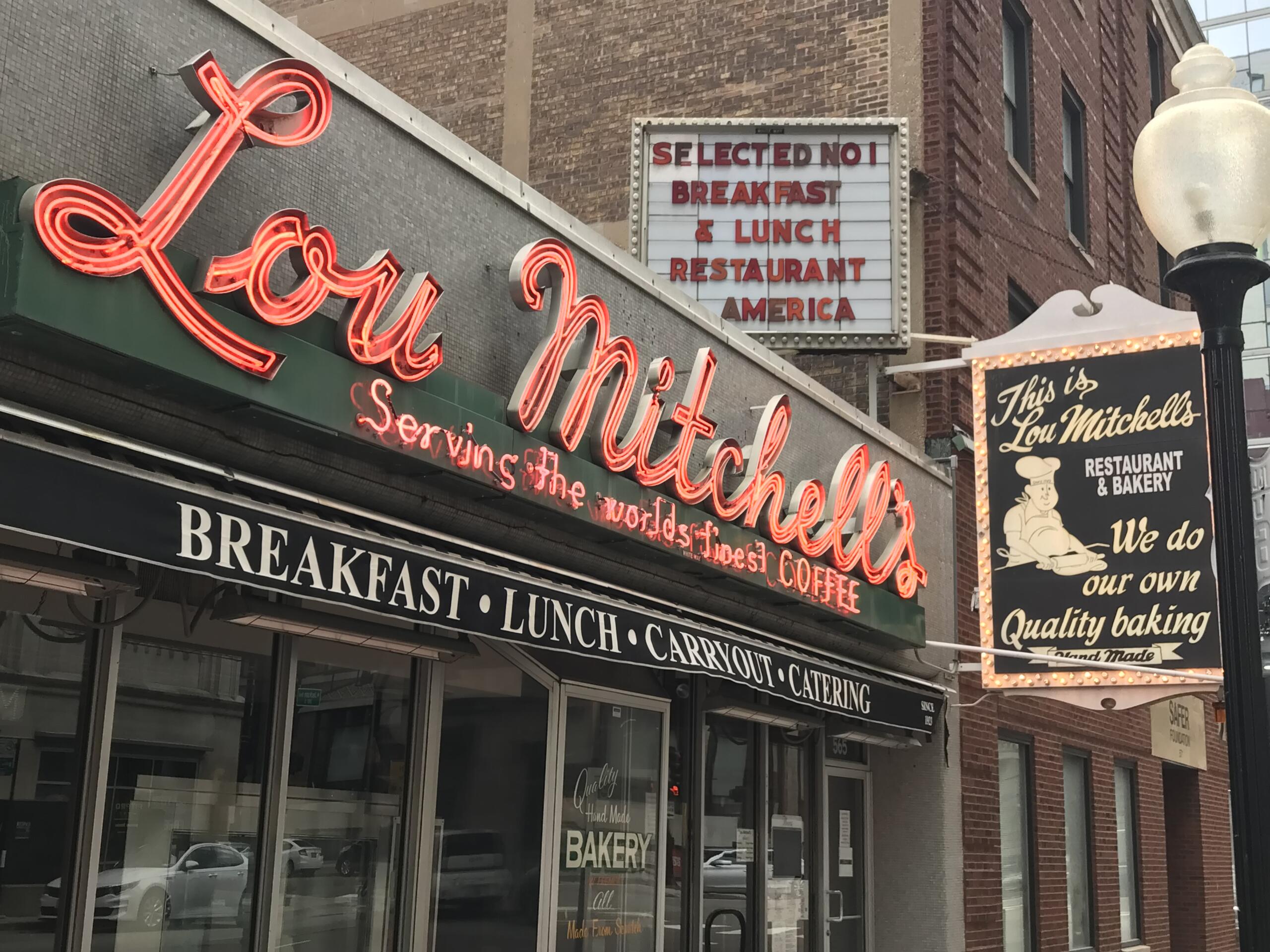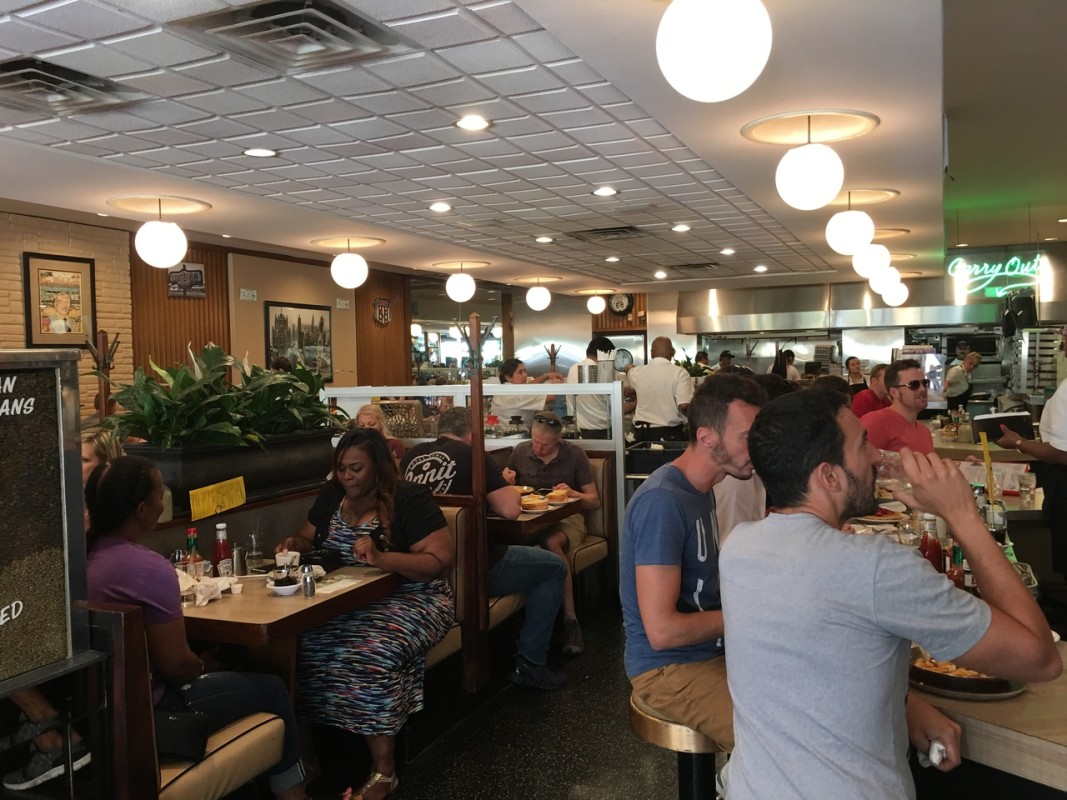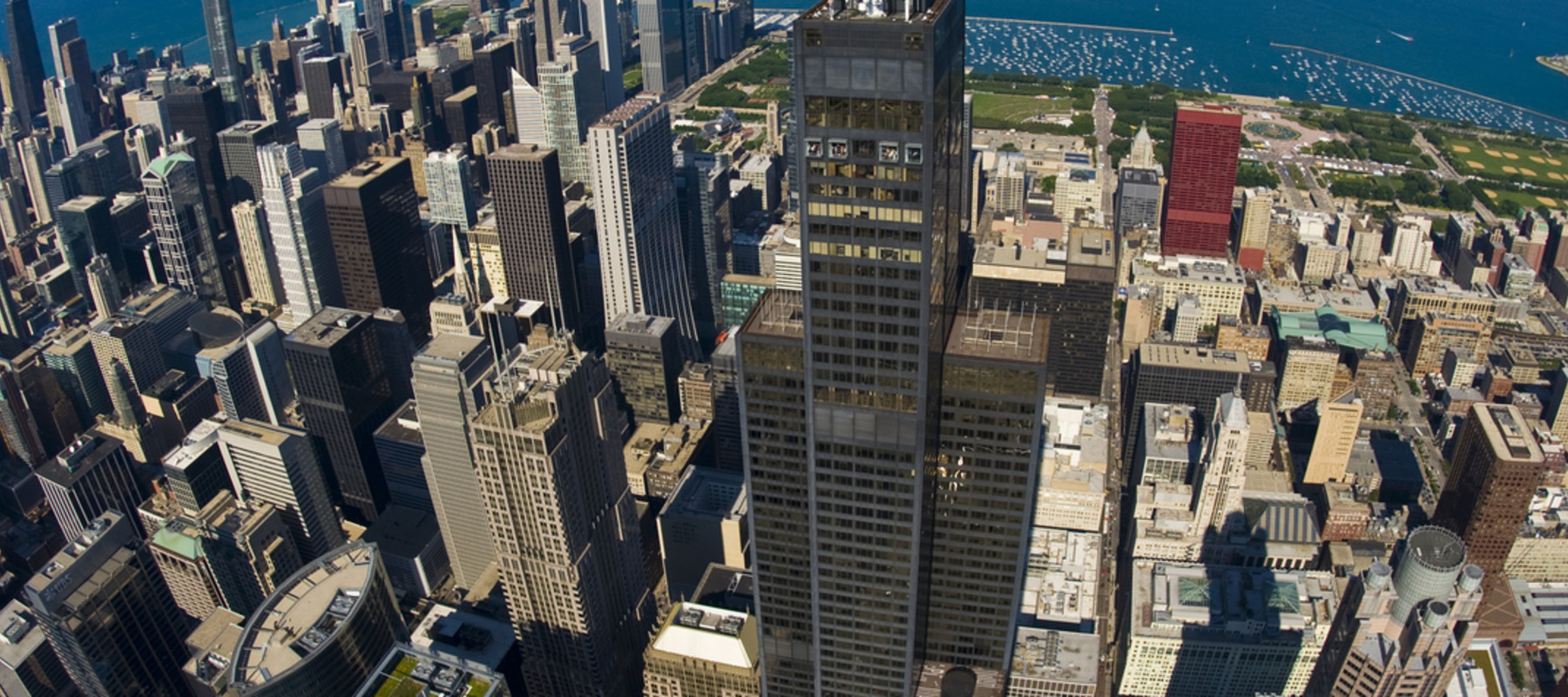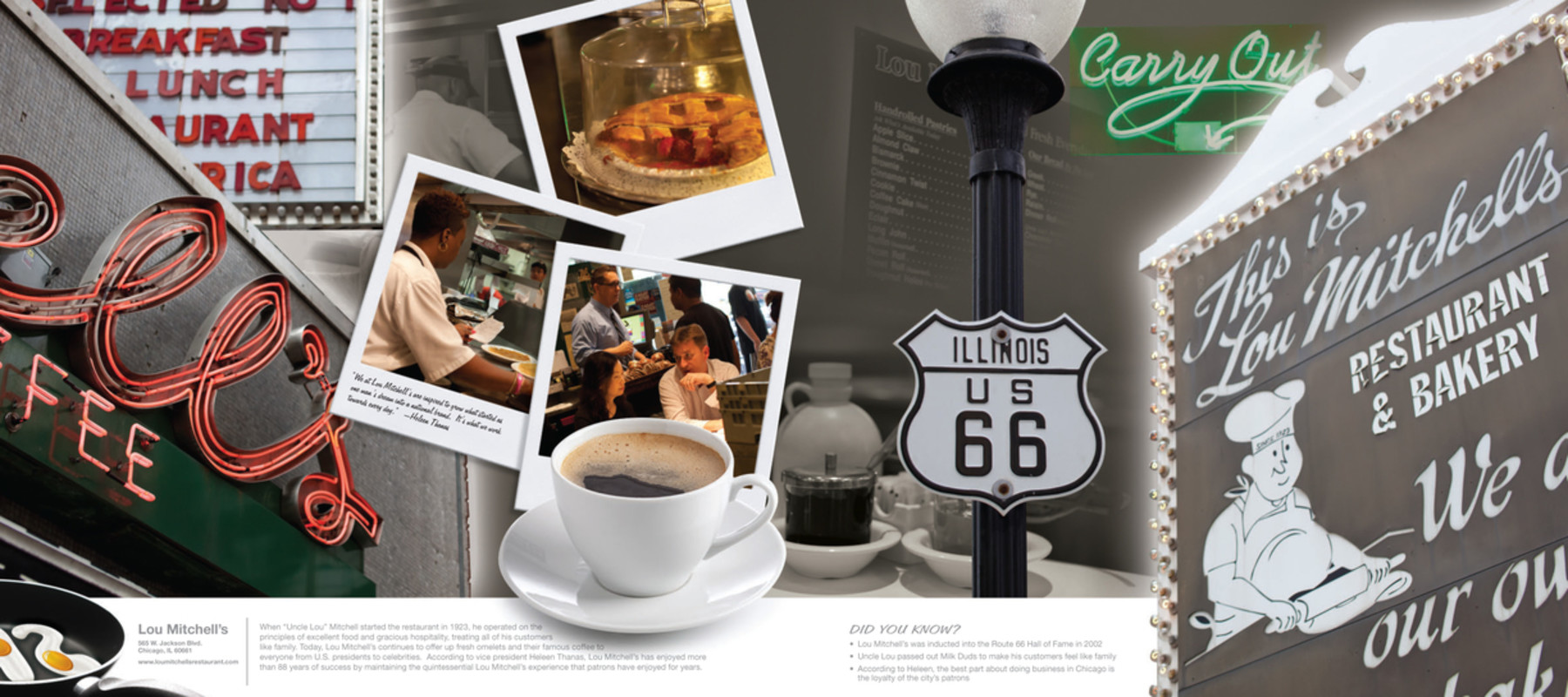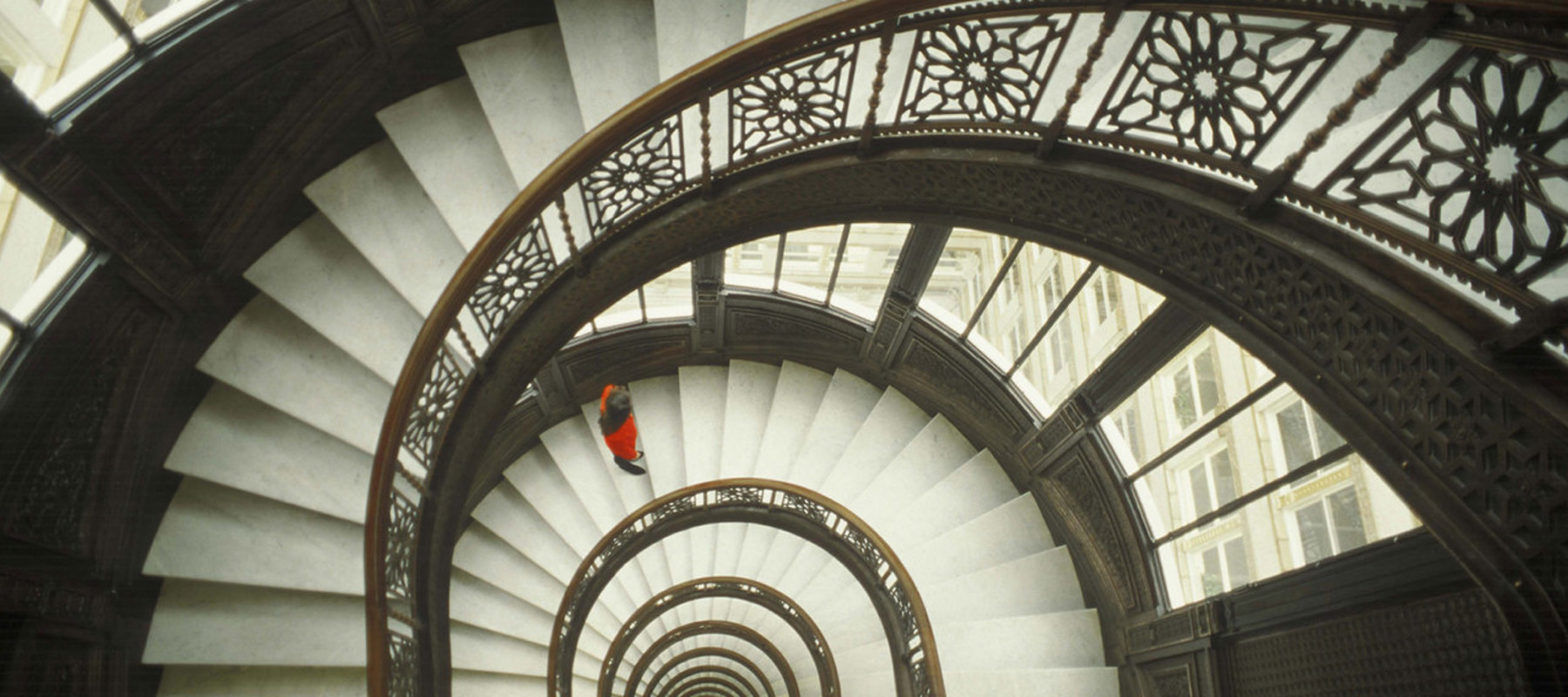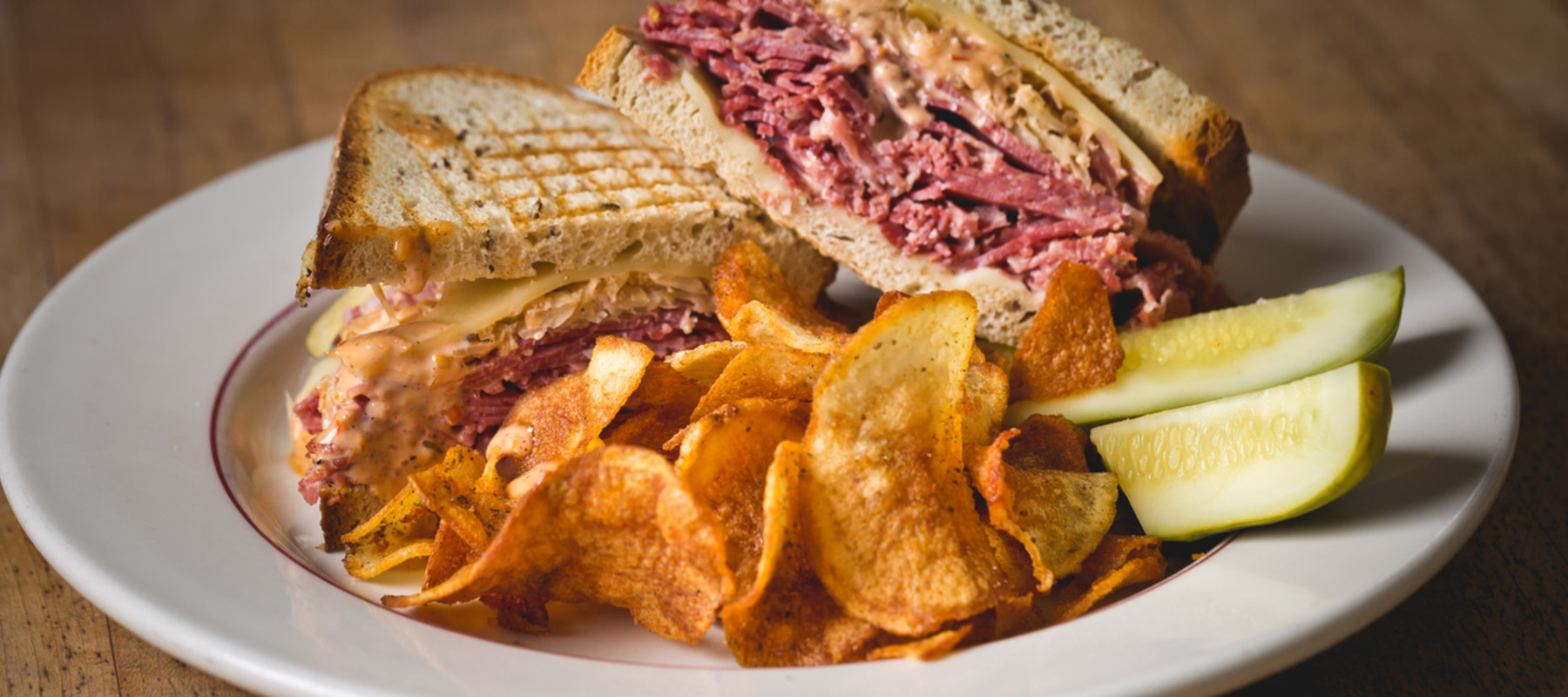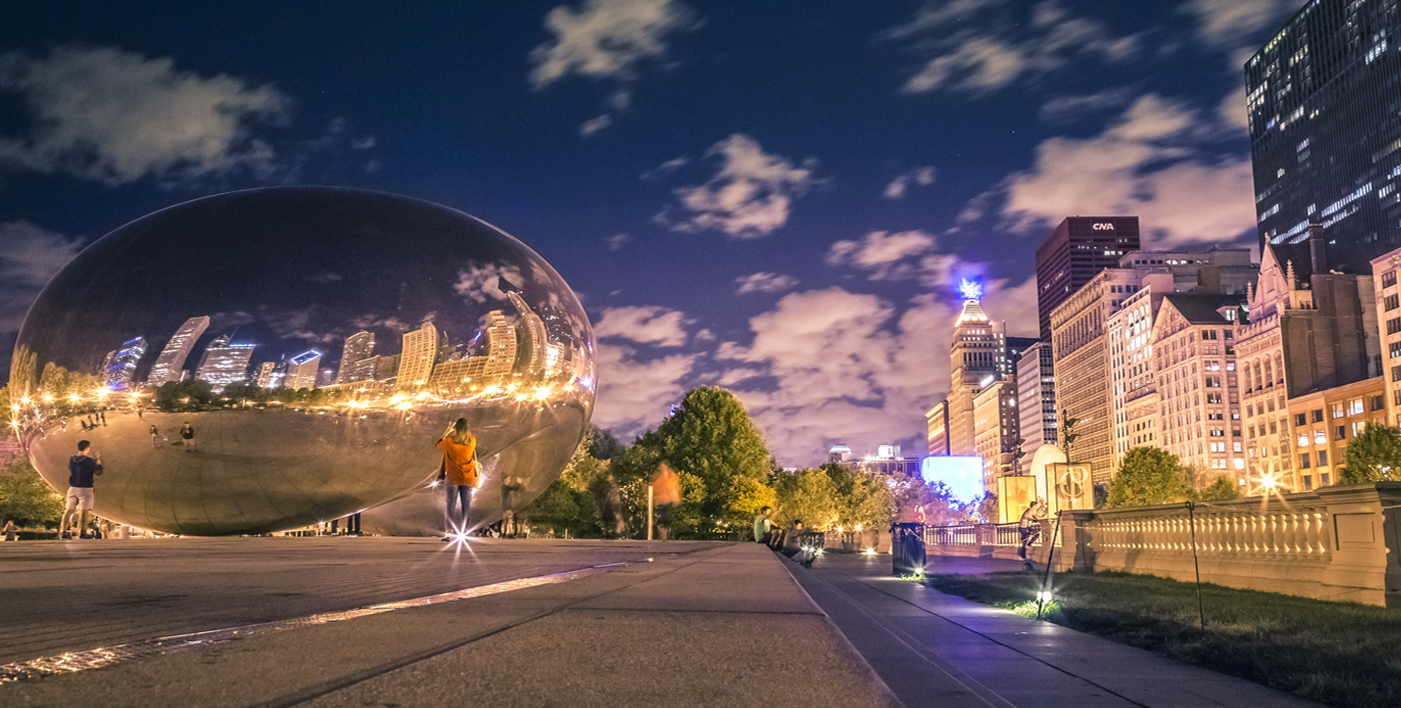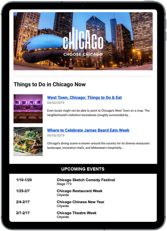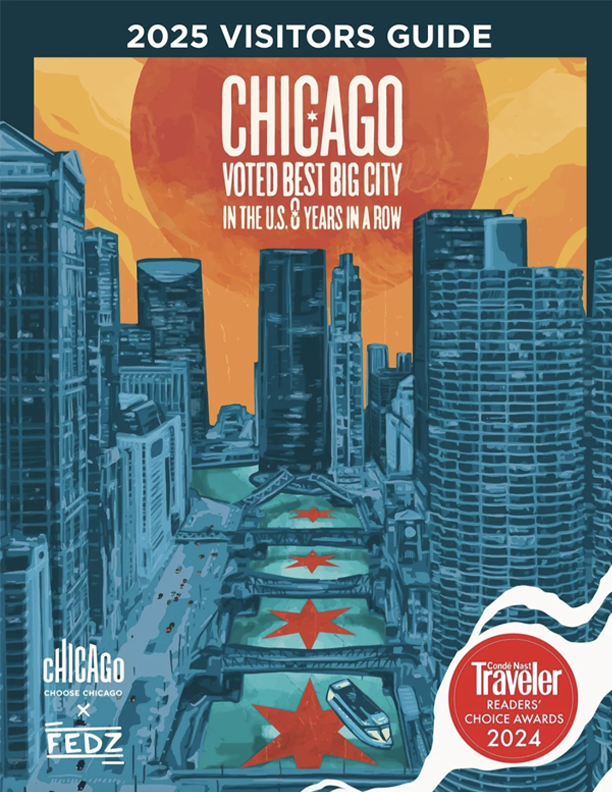Dubbed the “Mother Road” by celebrated American author John Steinbeck, Route 66 runs from Chicago to Los Angeles. Since 1926, it’s been shuttling dreamers, drifters, and road-trippers across the heartland of America. Its spirit lives on, especially in Chicago, where the iconic journey begins.
This two-day itinerary will immerse you in Route 66’s legacy as it winds through Chicago’s storied streets before moving westward, onto the rambling highway that has carried countless Americans to the Golden State. Grab your camera, cue up a retro playlist, and get ready for adventure with this guide to the best sights along Route 66 in Chicago.
Day one: Explore Route 66-era history in the heart of Chicago
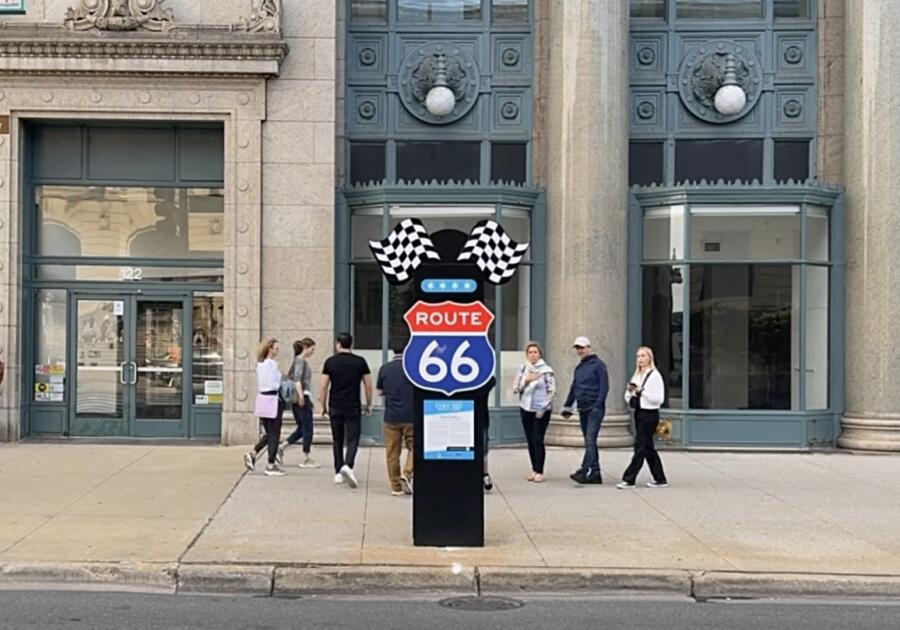
Morning: Snap a photo with the Route 66 start sign
The official Route 66 starting point is located at 122 S. Michigan Ave. near the intersection of South Michigan Avenue and East Adams Street and just across from the Art Institute of Chicago. There, you’ll find an eye-catching pylon with information about the start of the historic route.
While you’re there, make time to visit the Art Institute of Chicago to explore the museum’s incredible collection. Pause for a moment before Edward Hopper’s Nighthawks: This iconic painting, housed in Gallery 262, evokes the mood of mid-century urban America, an era when diners defined the roadside experience.
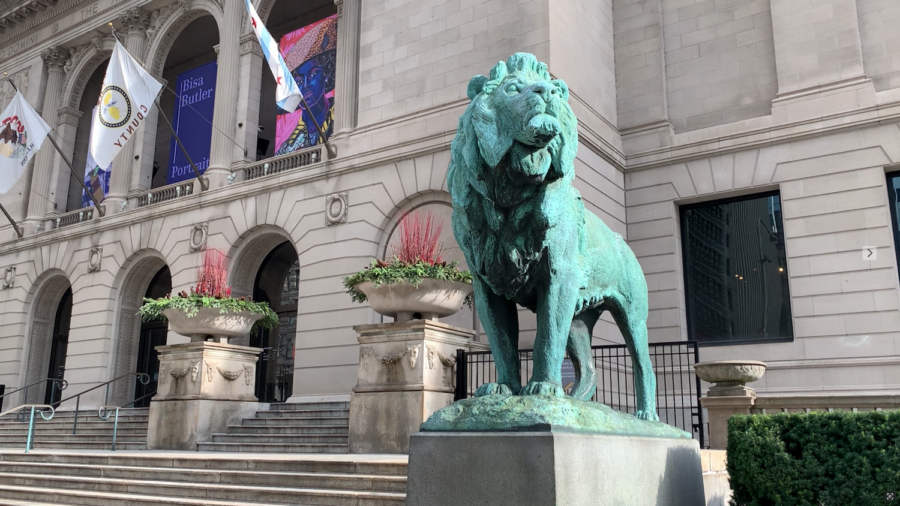
Afternoon: See Route 66 from above
For a bird’s-eye view of Route 66’s path through Chicago, take an elevator up to the tippy top of Willis Tower, the Skydeck at Willis Tower. From 1,353 feet up, you can trace the route westward as it cuts through the city’s grid.
The Skydeck’s interactive displays highlight Chicago’s architectural evolution, much of which coincided with Route 66’s heyday. Step out onto The Ledge, a glass box that juts out from the building’s façade, for a thrilling view of the city below.
While not directly on Route 66, the Chicago History Museum in Lincoln Park offers essential context for understanding the city’s role in shaping American transportation. Explore exhibits on the rise of the automobile, the Great Migration, and Chicago’s transformation in the early 20th century, when Route 66 was born.
Evening: Dinner at one of Chicago’s oldest restaurants
End your day with dinner at The Berghoff Restaurant. Located at 17 W. Adams St., The Berghoff was founded in 1898 by German immigrant Herman Berghoff and is considered one of the oldest restaurants still in operation along Route 66.
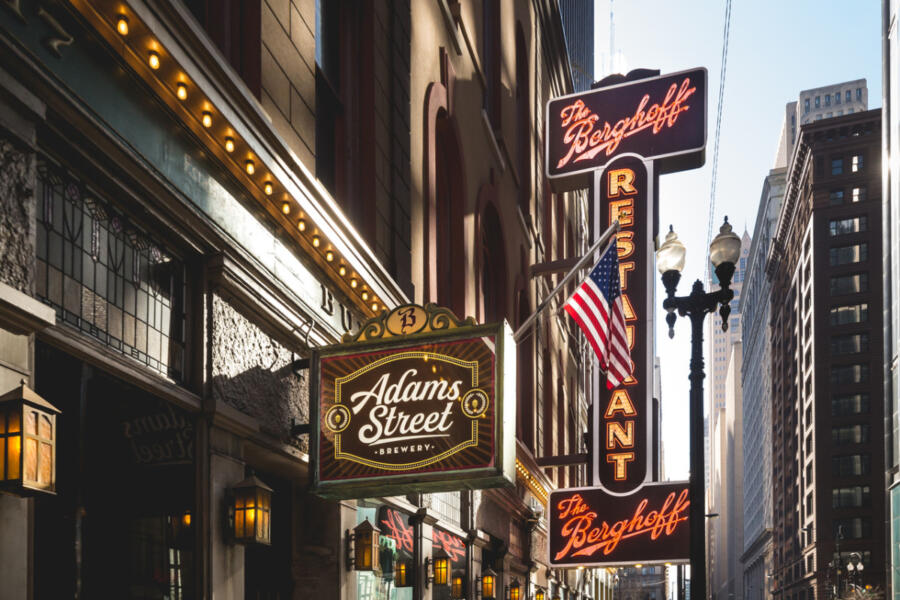
The Berghoff started out as a saloon serving nickel beers and free sandwiches. During Prohibition, it pivoted to “near beer” and soda pops, becoming a full-service restaurant still beloved today for its hearty German fare. When Prohibition ended in 1933, The Berghoff was awarded Chicago’s first post-Prohibition liquor license, still proudly on display today near the bar.
Cap off your evening with a classic cocktail at Jack’s Place, the lobby bar inside the Hampton Inn Chicago Downtown, formerly the historic Chicago Motor Club Building. The building was hailed as a “temple of transport,” a “monument to the progress of motordom,” when it opened in January 1929. Check out the 1928 Ford Model A perched on the mezzanine and order their signature “Giggle Water,” a Prohibition-inspired cocktail.
Day two: Start your drive and see Chicago’s Route 66 landmarks
Now that you’ve explored the history, it’s time to hit the road. Day two is all about driving the original Route 66 path through Chicago and its bordering suburbs.
Morning: A retro breakfast with a side of history
Kick off your journey with breakfast and “the world’s best coffee” at Lou Mitchell’s, a Chicago institution since 1923. This diner has been serving up hearty breakfasts and lunches to Route 66 travelers for nearly a century. Sit at the counter to chat with locals and other Route 66 travelers over sweet pancakes and savory omelets.
Head west on Adams Street and you’ll find Old St. Patrick’s Church, the oldest surviving church in Chicago. Built in 1856, it’s a rare architectural gem that stood strong even through the Great Chicago Fire of 1871. Step inside to see the church’s beautiful Celtic-inspired stained glass windows.
Midday:Cruise the original Route 66 on Ogden Avenue
Follow the original Route 66 southwest along Ogden Avenue. This stretch once bustled with motels, diners, and service stations catering to road-weary travelers. While many have vanished, you’ll still spot mid-century buildings, vintage signage, and auto shops that retain the road’s character.
Make a quick stop at Douglass Park, a green oasis, located along Route 66’s original alignment, that’s been part of Chicago’s West Side since the early 1900s. It’s a great place to stretch your legs and catch a breath of fresh air before hopping back in your car. Check out the Route 66 artwork painted on the park’s maintenance building.
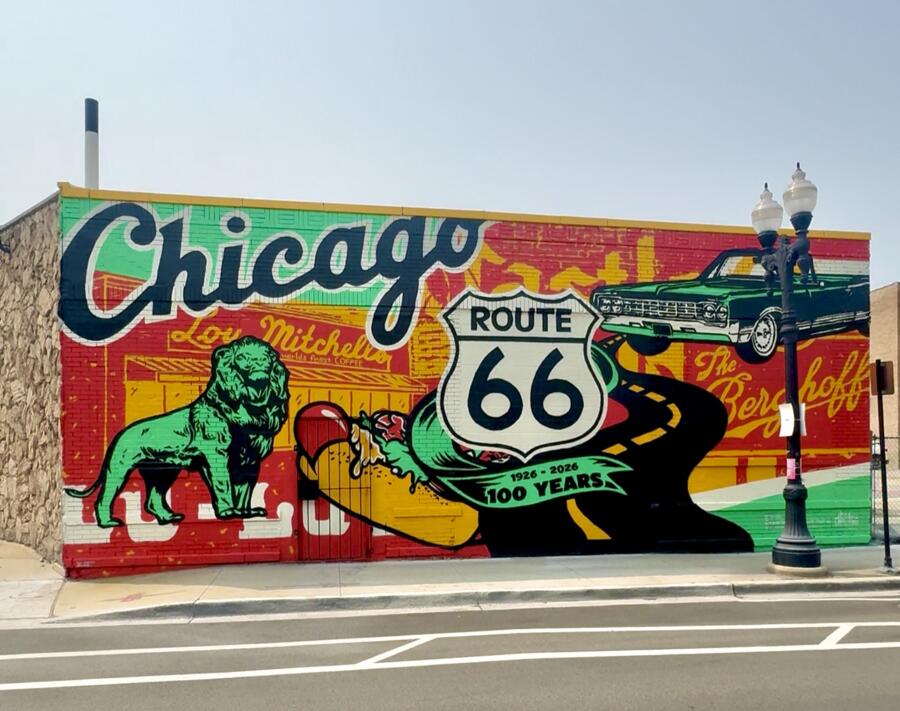
Pitstop: Lunch with retro vibes and a photo opp
Continue southwest on Route 66 (Ogden Avenue) and stop for a classic Chicago-style hot dog at Lulu’s Hot Dogs (1000 S. Leavitt St.). This old-school joint has been family-owned and operated since 1968, with all the old-school vibes still intact.
Be sure to snap a selfie with the Route 66-themed mural on the side of the building as your backdrop.
For dessert, head across the street to Ferrara Bakery, a Chicago institution. This beloved spot has been run by the same family since 1908, when it opened as the first Italian pastry shop on Taylor Street in Chicago’s Little Italy neighborhood. Stock up on their classic cannoli and other pastries before hitting the road again.
Optional detour: Midewin National Tallgrass Prairie
If you’re craving nature, consider a short detour to Midewin National Tallgrass Prairie, easily accessible from the Route 66 corridor. This vast prairie restoration project is now home to one of the most exciting ecological comebacks in the Midwest: the American bison. In 2015, Midewin reintroduced a conservation herd of bison to help restore native prairie ecosystems. Today, the herd of about 25 bison roams across 1,200 acres.
Learn more about Route 66 and start planning your Americana adventure today.

